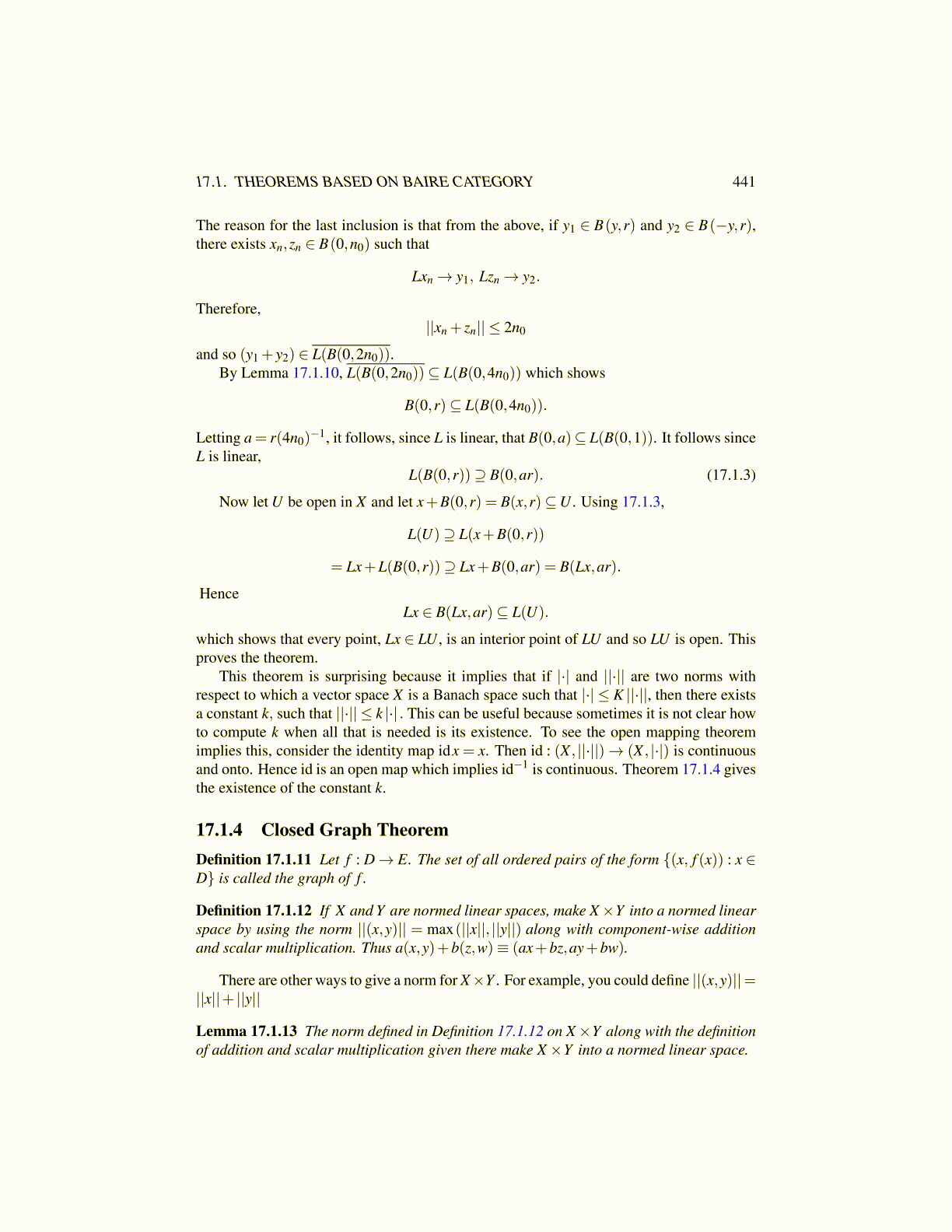
17.1. THEOREMS BASED ON BAIRE CATEGORY 441
The reason for the last inclusion is that from the above, if y1 ∈ B(y,r) and y2 ∈ B(−y,r),there exists xn,zn ∈ B(0,n0) such that
Lxn→ y1, Lzn→ y2.
Therefore,||xn + zn|| ≤ 2n0
and so (y1 + y2) ∈ L(B(0,2n0)).By Lemma 17.1.10, L(B(0,2n0))⊆ L(B(0,4n0)) which shows
B(0,r)⊆ L(B(0,4n0)).
Letting a = r(4n0)−1, it follows, since L is linear, that B(0,a)⊆ L(B(0,1)). It follows since
L is linear,L(B(0,r))⊇ B(0,ar). (17.1.3)
Now let U be open in X and let x+B(0,r) = B(x,r)⊆U . Using 17.1.3,
L(U)⊇ L(x+B(0,r))
= Lx+L(B(0,r))⊇ Lx+B(0,ar) = B(Lx,ar).
HenceLx ∈ B(Lx,ar)⊆ L(U).
which shows that every point, Lx ∈ LU , is an interior point of LU and so LU is open. Thisproves the theorem.
This theorem is surprising because it implies that if |·| and ||·|| are two norms withrespect to which a vector space X is a Banach space such that |·| ≤ K ||·||, then there existsa constant k, such that ||·|| ≤ k |·| . This can be useful because sometimes it is not clear howto compute k when all that is needed is its existence. To see the open mapping theoremimplies this, consider the identity map idx = x. Then id : (X , ||·||)→ (X , |·|) is continuousand onto. Hence id is an open map which implies id−1 is continuous. Theorem 17.1.4 givesthe existence of the constant k.
17.1.4 Closed Graph TheoremDefinition 17.1.11 Let f : D→ E. The set of all ordered pairs of the form {(x, f (x)) : x ∈D} is called the graph of f .
Definition 17.1.12 If X and Y are normed linear spaces, make X×Y into a normed linearspace by using the norm ||(x,y)|| = max(||x||, ||y||) along with component-wise additionand scalar multiplication. Thus a(x,y)+b(z,w)≡ (ax+bz,ay+bw).
There are other ways to give a norm for X×Y . For example, you could define ||(x,y)||=||x||+ ||y||
Lemma 17.1.13 The norm defined in Definition 17.1.12 on X×Y along with the definitionof addition and scalar multiplication given there make X×Y into a normed linear space.